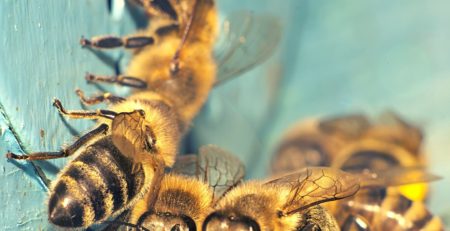When Should You Expect Bee Swarming to Happen?
Bee swarming is a natural phenomenon that happens when a colony of honeybees splits into two or more groups. The colony just gets so big that it needs to separate so all the bees can continue being happy and healthy! And while it’s a natural occurrence, it can be pretty disturbing to find your home swarmed by a bunch of bees looking for a new place to live. That’s why it’s essential to know when to expect bee swarming and when you should hire bee removal services in Orange County to safely get swarming bees out of your property and into a safe area for them to build a new home!

When Does Bee Swarming Occur?
This process usually happens in the spring or early summer when the colony has grown too much. This time is also preferable because the weather is warm and favorable for the bees to fly and find new locations to establish their new hives.
In most areas, bee swarming typically occurs between April and July, with the peak swarming season being in May and June. However, the exact timing can depend on various factors such as location, weather conditions, and the availability of food sources. Let’s take a closer look at all these factors below.
What are the Factors that Affect When Bee Swarming Happens?
1. Colony Size
The colony’s size is one of the most important factors that trigger bee swarming. When a colony becomes overcrowded, the bees prepare for swarming by producing queen cells where the new queens will come out. The former queen will leave the hive with a group of worker bees and search for a new location to establish their new hive, while the new queen will remain in the old hive and continue to build up the colony.
2. Food Availability
The timing of bee swarming also depends on the availability of food sources. Bees require nectar and pollen to survive, and the availability of these resources can vary depending on the environment and the time of year. In areas with mild winters, bees may start swarming earlier in the year when food sources become available, while in colder areas, swarming may occur later in the spring when the weather warms up.
3. Weather Conditions
Weather conditions can also play a significant role in bee swarming. Bees are more likely to swarm on warm, sunny days when temperatures exceed 60 degrees Fahrenheit. Rainy or cloudy days can delay swarming as bees prefer to fly in good weather conditions.
4. Beekeeping
Beekeepers can also influence bee swarming timing by adequately managing their hives. Regular hive inspections, adequate feeding, and space management can help prevent overcrowding and reduce the likelihood of swarming. Additionally, beekeepers can use swarm traps to capture swarms and relocate them to new hives, which can help prevent wild swarms from becoming established in unwanted locations.
Conclusion
In conclusion, bee swarming usually occurs in the spring and early summer months when colonies become overcrowded, and the weather is warm and favorable for flying. The exact timing can vary depending on location, weather conditions, and food availability, but beekeepers can manage their hives to reduce the likelihood of swarming and capture swarms to prevent wild colonies from establishing in unwanted locations.
If your home has become subject to bee swarming, consider hiring bee removal services in Irvine, CA, to remove bees from your property safely. They can keep both you and the bees safe from harm!
The Bee Man would happily help you with all your bee removal needs. Contact us today at (949) 455-0123 to get started.










